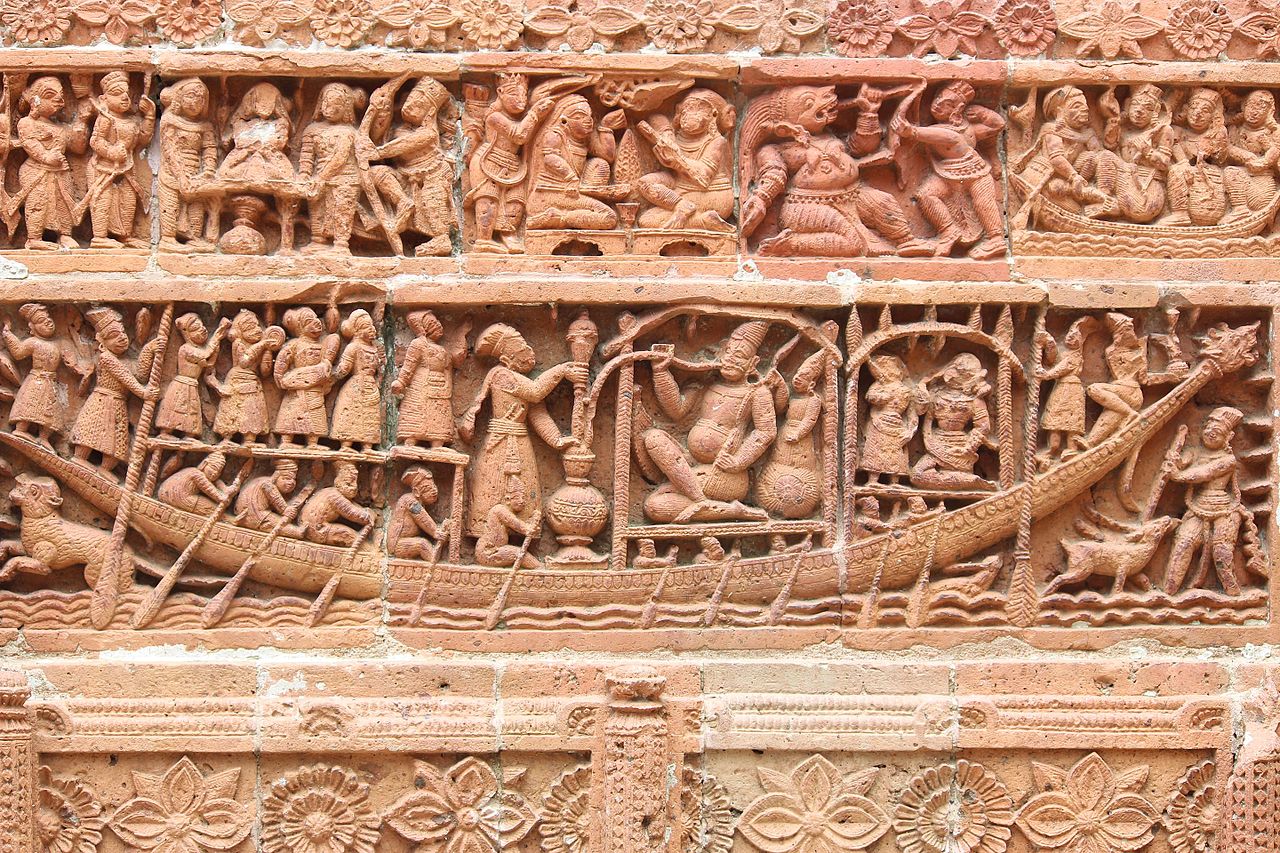Exploring the Magnificent Kantaji Temple: A Treasure of Bengal’s Heritage
In the heart of the picturesque Dinajpur countryside in Bangladesh stands a late-medieval marvel that beckons both pilgrims and heritage enthusiasts alike—the Kantaji Temple. This architectural gem, also known as Kantanagar Temple, is a testament to the rich religious and artistic heritage of the 18th century. This blog post invites you to embark on a journey through time as we delve into the enchanting history, exquisite architecture, and cultural significance of Kantaji Temple.
A Divine Dedication: Krishna and Rukmini
The Kantaji Temple is a resplendent ode to the divine love of Lord Krishna and his beloved consort, Rukmini. Constructed by Maharaja Pran Nath, its construction commenced in 1704 CE and was gracefully concluded during the reign of his son, Raja Ramnath, in 1722 CE. This architectural marvel stands as a poignant symbol of their devotion.

A Tragic Earthquake and Architectural Splendor
Originally boasting nine spires in a navaratna (nine-spired) style, Kantaji Temple was an epitome of architectural grandeur. Tragically, an earthquake in 1897 reduced these spires to rubble. Nevertheless, remnants of its past glory continue to captivate visitors.Once crowned with nine ornamental two-story towers, Kantaji Temple’s splendor was unmatched. However, the devastating earthquake of 1897 claimed these towers, leaving a void that was never filled. Nonetheless, the temple’s elevated platform and Nava-ratna design continue to evoke wonder.
Terracotta Tales
Kantaji Temple’s outer surface is a canvas adorned with approximately 15,000 terracotta works. These intricate plaques depict a myriad of subjects, including flora and fauna, geometric motifs, scenes from the Ramayana and the Mahabharata, and snapshots of daily life from the era.Its most striking feature is the intricate surface decoration, adorned with countless sculpted terracotta plaques.

Kantaji Temple is celebrated for its mesmerizing terracotta architecture. Its defining features include multi-cusped arches, plastered walls adorned with intricate rectangular and square panelings, and a central archway framed by a prominent mihirab. Ornamental turrets flank the fronton, semi-octagonal mirirab apertures enchant with their design, and Persian muquarnas work graces the stucco interiors. The bulbous domes, lotus, and kalasa finials atop octagonal drums lend an awe-inspiring aura. The temple’s corner towers rise majestically above merloned parapets, creating a sight to behold.

Preserving a Heritage
Recognizing the historical and cultural significance of Kantaji Temple, the Department of Archaeology declared it a protected monument in 1960. Since then, they have undertaken vital conservation and restoration efforts to ensure that this architectural masterpiece endures for generations to come.

A UNESCO World Heritage Site
In recognition of its cultural importance, Kantaji Temple has been designated a UNESCO World Heritage Site. It stands not only as a religious center but also as a symbol of Bangladesh’s rich heritage.
Kantaji Temple, or Kantanagar Temple, transcends time and space to transport visitors into the heart of 18th-century Bengal. With its architectural grandeur, intricate terracotta artwork, and cultural significance, it stands as a testament to the enduring legacy of devotion, artistry, and heritage in Bangladesh. A visit to this captivating temple is a journey through history and spirituality, promising to leave an indelible mark on all who tread its hallowed grounds.

